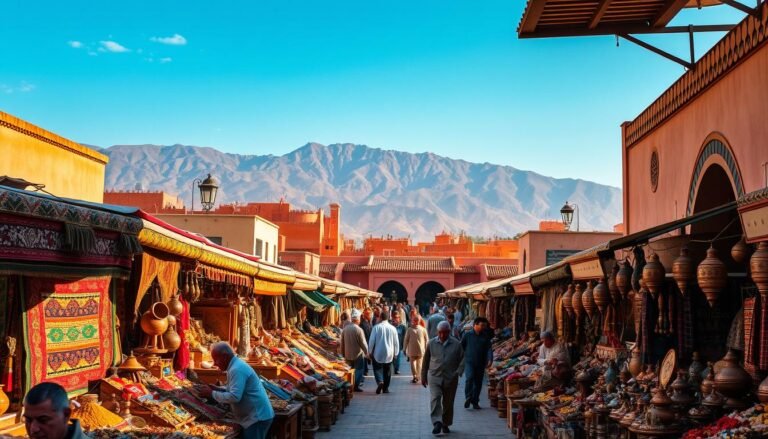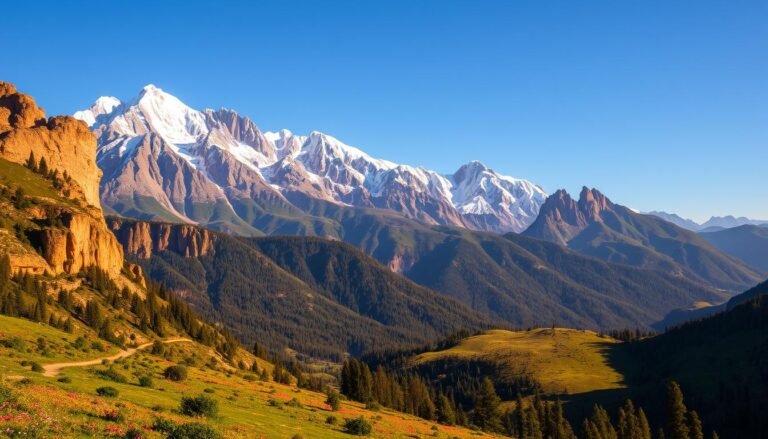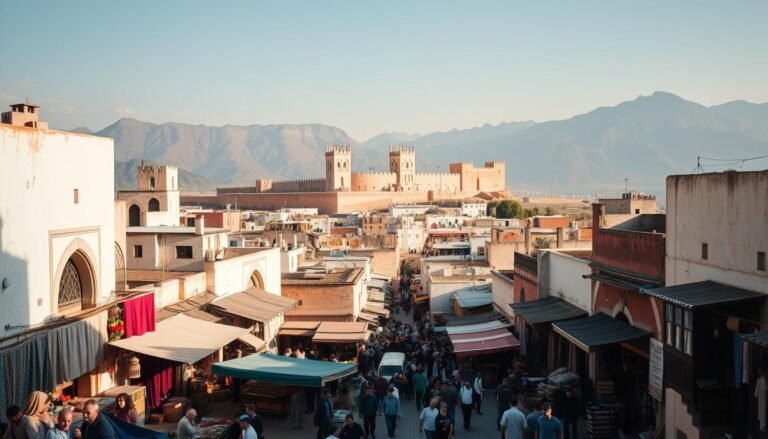Atlas Mountains Morocco: Unveil the Beauty of North Africa
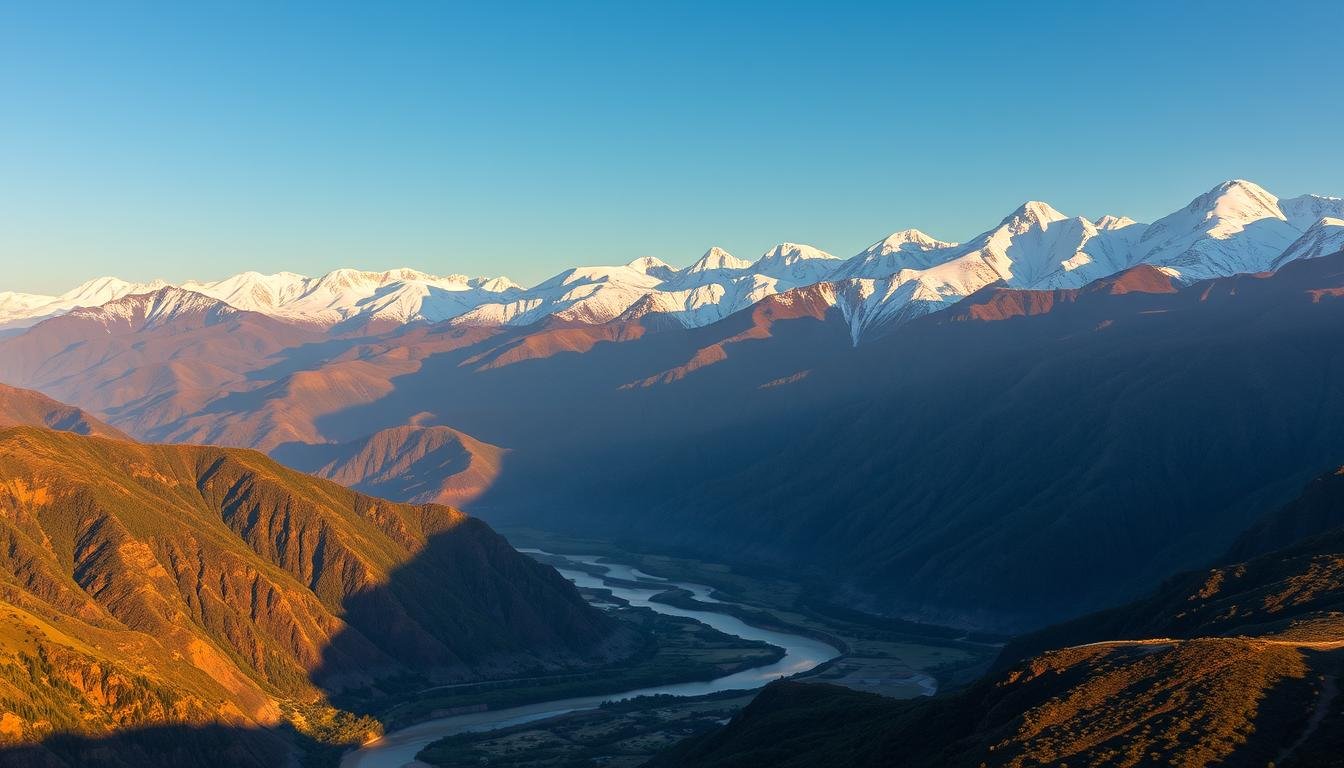
Imagine standing amidst the breathtaking landscapes of North Africa, where the Atlas Mountains stretch across the horizon. This stunning mountain range is more than just a geological wonder—it’s a gateway to diverse ecosystems and rich cultural heritage. From snow-capped peaks to sun-drenched desert plateaus, the Atlas Mountains offer an unforgettable adventure.
Spanning over 1,500 miles across Morocco, Algeria, and Tunisia, the High Atlas Mountains are a testament to nature’s grandeur. They serve as a natural barrier between the arid Sahara Desert and the fertile plains to the north, creating a dramatic contrast of climates. Whether you’re exploring the ancient Berber villages or trekking through scenic passes, every moment here feels like a step into a living history book.
Our journey through the Atlas Mountains is not just about the terrain; it’s about immersing yourself in the vibrant cultures and untouched beauty of North Africa. Join us as we explore this incredible region, where every trail tells a story and every view leaves you in awe.
Key Takeaways
- The Atlas Mountains are a 1,500-mile range across Morocco, Algeria, and Tunisia.
- They feature diverse landscapes, from snow-capped peaks to desert plateaus.
- The High Atlas Mountains are home to Berber villages and historical sites like Ait Ben Haddou.
- Popular activities include trekking, rock climbing, and scenic drives through passes like Tizi n’Test.
- The region offers a unique blend of natural beauty and cultural richness.
What Makes the Atlas Mountains Morocco Unique?
Nestled in the heart of North Africa, the Atlas Mountains offer a captivating blend of natural beauty and cultural richness. This mountain range is unlike any other, with its snow-capped peaks, lush valleys, and centuries-old Berber traditions.
The High Atlas and Anti-Atlas ranges stand out for their distinct charm. The High Atlas is home to Mount Toubkal, the highest peak in North Africa, while the Anti-Atlas is known for its rugged landscapes. These contrasts create a diverse geological tapestry that attracts adventurers and culture enthusiasts alike.
What truly sets the Atlas Mountains apart is the interplay between their dramatic landscapes and the vibrant Berber culture. Visitors can experience the warmth of local communities, explore ancient traditions, and witness the ever-changing weather patterns that shape this unique environment. The region’s rich history and traditions add an irreplaceable dimension to any visit, making it a destination that seamlessly blends adventure with cultural immersion.
Understanding the Geography and Diverse Ranges
North Africa’s diverse landscapes are defined by the Atlas range, stretching over 1,200 miles. This vast region is divided into three main sections: the High Atlas, Anti-Atlas, and Saharan Atlas. Each range offers unique geographical features that shape the environment and local ecosystems.
Exploring the High Atlas, Anti-Atlas, and Saharan Atlas
The High Atlas stands out with its rugged slopes and high altitudes. Home to Mount Toubkal, the highest peak in North Africa at 13,665 feet, it attracts adventurers worldwide. In contrast, the Anti-Atlas features striking red granite formations and volcanic landscapes, offering a warmer climate with gentler slopes.
| Range | Location | Key Features | Highest Peak | Climate |
|---|---|---|---|---|
| High Atlas | Morocco | Rugged terrain, snow-capped peaks | Mount Toubkal – 13,665 ft | Alpine with seasonal snow |
| Anti-Atlas | Morocco | Red granite, volcanic formations | Unknown | Temperate, arid valleys |
| Saharan Atlas | Algeria | Ancient base rock, folded structures | Mount Chelia – 7,638 ft | Semi-arid with cold winters |
Key Mountain Peaks and Their Significance
Mount Toubkal’s altitude influences the local microclimate, creating diverse flora and fauna. The Aurès Mountains in the Saharan Atlas feature Mount Chelia, supporting unique ecosystems. These peaks are not just geographical landmarks but also play crucial roles in shaping regional weather patterns and habitats.
Essential Preparations Before Embarking on Our Trek
Preparing for a trek in the Atlas Mountains requires careful planning to ensure a safe and enjoyable experience. Physical conditioning is essential, as the terrain can be challenging. Start training a few months in advance with regular cardio exercises and practice day hikes to build endurance.
Proper gear is another critical aspect. Pack sturdy hiking boots, layered clothing, and trekking poles for steep inclines. Stay hydrated by carrying at least 2-3 liters of water per person. Always check the weather forecast to avoid unexpected conditions.
Acclimatization is key to avoiding altitude sickness. Spend a few days at lower elevations before heading higher. A well-planned itinerary with gradual ascents can significantly reduce risks. Consider a 3-day trek for better acclimatization compared to a rushed 2-day option.
“Preparation is the cornerstone of a successful trek.” By focusing on fitness, gear, and weather, you’ll be ready to embrace the adventure confidently. Remember, thorough planning not only enhances safety but also ensures a more rewarding experience.
How to Explore Atlas Mountains Morocco Like a Pro
Exploring the Atlas Mountains is an adventure like no other, offering a mix of stunning landscapes and rich cultural experiences. To make the most of your journey, consider joining a guided tour or small group adventure. These options provide expert guidance, ensuring both safety and enjoyment as you navigate the terrain.
Engaging with local Berber communities is a highlight of any visit. Learning about their customs and traditions adds depth to your experience. For the more adventurous, activities like trekking and rock climbing can be combined with cultural insights, creating a balanced and memorable trip.
| Activity | Duration | Best Time | Experience Level |
|---|---|---|---|
| Trekking | 7-9 hours | Spring/Autumn | Moderate |
| Rock Climbing | Full Day | March-May | Advanced |
| Cultural Tours | Half Day | Year-Round | All Levels |
Practical advice includes proper gear, staying hydrated, and acclimatizing to higher altitudes. With careful planning, your adventure in the Atlas Mountains will be both safe and rewarding. Remember, the key to a successful trek is thorough preparation and a willingness to immerse yourself in the local culture.
Navigating the High Atlas and Its Iconic Trails
Discover the breathtaking trails of the High Atlas, where every route offers a unique blend of scenic beauty and physical challenge. From the rugged terrain of Mount Toubkal to the serene valleys of Aït Bougmez, each trail provides an unforgettable experience for trekkers.
Mapping Out the Best Hiking Routes
| Route | Distance | Duration | Difficulty | Notable Features |
|---|---|---|---|---|
| Toubkal Circuit | Approx. 40 miles | 6 days | Challenging | Panoramic views, traditional Berber villages |
| Aït Bougmez Valley Trail | 15 miles | 3-4 days | Moderate | Lush valleys, traditional agriculture |
| Jebel Saghro Circuit | 56 miles | 5 days | Strenuous | Rocky landscapes, diverse wildlife |
Each trail in the High Atlas requires careful navigation, marking every footstep on rugged terrain. Whether you’re climbing steep sections or switching trails, preparation is key. Local guides can provide invaluable insights, helping you choose the best routes based on your experience level.
Every foot of these trails offers a chance to connect with nature and culture. With proper planning and a willingness to immerse yourself in the local way of life, your journey through the High Atlas will be both rewarding and memorable.
Trekking Through Historical Berber Villages
Trekking through the historical Berber villages nestled in the Atlas range offers an enriching experience that blends adventure with cultural immersion. These ancient settlements, scattered across the mountains, provide a glimpse into a way of life that has remained largely unchanged for centuries.
Immersing in Authentic Local Life
As you make your way through the villages, you’ll notice the rustic charm of traditional Berber architecture, with stone-built houses and terraced fields. The locals greet visitors with warm hospitality, offering a chance to engage in authentic interactions that add depth to your journey.
| Village | Traditional Practices | Cultural Activities |
|---|---|---|
| Ait Benhaddou | Traditional agriculture | Guided tours, local crafts |
| Imlil | Organic farming | Storytelling, music |
| Asni | Sheep herding | Festivals, local markets |
Each day spent trekking through these villages reveals the simple yet enduring rhythm of life in the mountains. From participating in local customs to sharing meals with families, every moment connects you deeper to the Berber culture. This authentic interaction makes your trek not just an adventure, but a meaningful journey into the heart of North Africa.
Experiencing the Local Culture and Cuisine
Blending breathtaking views with rich cultural experiences, the Atlas region offers a unique opportunity to immerse yourself in local traditions and savor exquisite cuisine. The heart of any visit lies in experiencing the warm Berber hospitality, where every meal is a celebration of flavors and togetherness.
Traditional dishes like tagine and couscous are more than just meals—they are testaments to the region’s culinary heritage. These slow-cooked stews and hearty grains are often served in cozy village eateries, where the aroma of spices like cumin and cinnamon fills the air. The vibrant colors and intricate preparation make dining an interactive experience that delights the senses.
| Cultural Activity | Duration | Best Time | Experience Level |
|---|---|---|---|
| Culinary Tours | Half Day | Year-Round | All Levels |
| Local Festivals | Full Day | Spring/Autumn | Intermediate |
| Traditional Tea Ceremonies | 1-2 Hours | Any Time | Beginner |
Joining a local tour is the perfect way to dive into authentic cultural events and gatherings. Imagine enjoying a meal under the stars, surrounded by the stunning view of the valleys below. These moments create lifelong memories and offer a deeper connection to the land and its people.
As you explore during the day, consider balancing your itinerary with both hiking and cultural immersions. This blend allows you to fully appreciate the region’s natural beauty while gaining insights into its vibrant traditions. Whether it’s a day spent trekking or an evening immersed in local customs, every experience enriches your journey.
“The essence of travel lies not just in seeing new sights, but in experiencing the soul of the place through its culture and cuisine.”
Practical Hiking Tips for Safety and Endurance
Embarking on a hiking adventure in the Atlas Mountains requires careful preparation to ensure both safety and an enjoyable experience. Whether you’re aiming for the summit or exploring lower trails, understanding how to manage challenges is crucial.
Managing Altitude Sickness and Changing Weather
Altitude sickness can affect even experienced hikers. To mitigate this, ascend gradually and spend a day acclimatizing at lower elevations before heading higher. Staying hydrated and recognizing early symptoms like headaches can prevent more severe issues.
Essential Gear and Equipment Recommendations
Packing the right gear is vital. Sturdy, waterproof boots are a must, along with layered clothing to adapt to temperature changes. Trekking poles can provide stability on uneven terrain, and carrying enough water is essential due to limited sources.
| Equipment | Purpose | Recommendation |
|---|---|---|
| Hiking Boots | Provide ankle support and traction | Waterproof with good grip |
| Layered Clothing | Regulate body temperature | Moisture-wicking base layers |
| Trekking Poles | Assist with balance and reduce strain | Adjustable and lightweight |
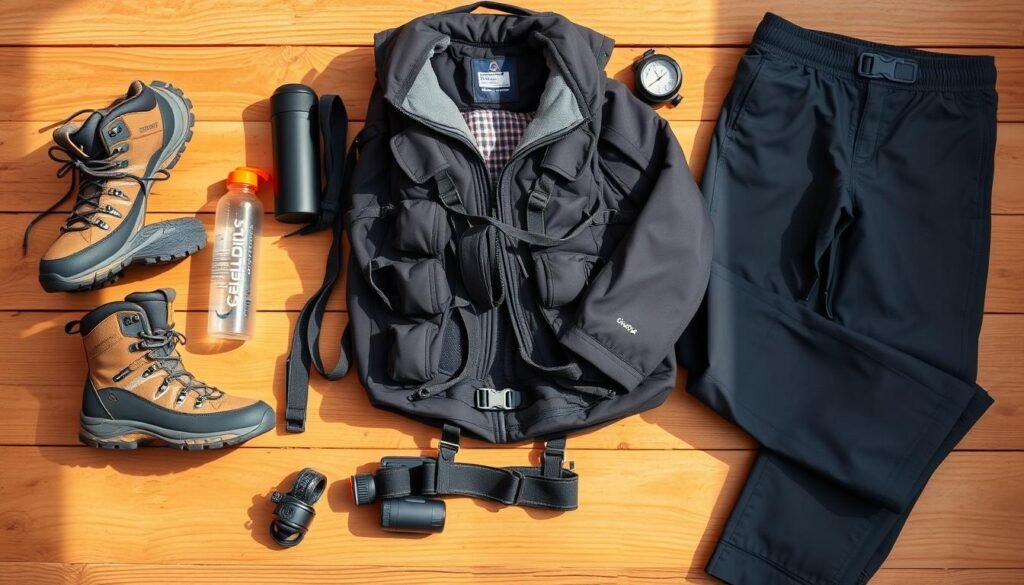
Frequent breaks and a steady pace help conserve energy, especially during long treks. Being prepared for changing weather conditions ensures a safer and more enjoyable hiking experience.
Mastering Mountain Navigation and Trail Routes
Understanding the best route and trail strategies is crucial for a successful adventure in the Atlas range. Whether you’re a seasoned explorer or a first-time trekker, navigating these paths requires skill and preparation.
Start by learning to read trail markers, even in remote areas. These signs are your guideposts, ensuring you stay on track. Combine traditional map and compass skills with modern GPS tools for added reliability. Local guides offer invaluable insights, helping you choose safe and scenic routes.
Adjusting your pace is key. Consider the time of day and trail conditions to maintain a steady pace and conserve energy. Proper planning prevents getting lost in challenging terrain. With careful preparation, you’ll master the trails and enjoy a rewarding experience.
| Navigation Tool | Strategy | Benefit |
|---|---|---|
| Trail Markers | Regularly check signs | Stay on course |
| Map and Compass | Use alongside GPS | Enhanced accuracy |
| Local Guides | Seek expert advice | Invaluable insights |
By mastering these strategies, you’ll confidently explore the Atlas trails, ensuring a safe and memorable journey.
Unforgettable Views and Photographic Moments
Capturing the breathtaking vistas from the peaks of the Atlas range is an experience like no other. The panoramic views from these elevated points offer a visual feast that rewards early risers and patient photographers.
Capturing Sunrise and Sunset from the Peaks
Watching the sunrise over Mount Toubkal is a magical experience. The sky transforms into a kaleidoscope of colors as the first light of dawn touches the peak. Similarly, the sunset paints the horizon with hues of orange and pink, creating a dramatic backdrop for photography.
| Photography Tip | Best Time | Equipment |
|---|---|---|
| Capturing Golden Hour | Dawn or Dusk | Polarizing Filter |
| Wide-Angle Shots | Early Morning | Wide-Angle Lens |
| Portrait Mode | Late Afternoon | Prime Lens |
For the best shots, consider the golden hour when the sky is soft and warm. A wide-angle lens can capture the vast expanse of the landscape, while a prime lens is ideal for portraits against the vibrant sky. Remember, patience is key—sometimes the perfect shot requires waiting for the right light.
These moments are the ultimate reward for a challenging trek. With proper preparation and the right equipment, you can capture unforgettable memories from the peaks of the Atlas range.
Adjusting Our Itinerary for Seasonal Changes
As we explore the natural beauty of North Africa, understanding how seasonal changes impact our journey is crucial. The varying conditions throughout the year influence both trail accessibility and the overall experience, making it essential to plan according to the time of visit.
Springtime Blooms and Fall Colors on the Trails
Spring, from March to May, transforms the landscape with vibrant wildflowers, creating a picturesque backdrop for treks. The mild temperatures make it an ideal time for exploring without the harsh heat, offering a refreshing experience for hikers. In the fall, from September to November, the cooling weather and changing foliage add a new dimension to the trails, making every step a visual treat.
Overcoming Winter Challenges on Snowy Routes
Winter brings snow-covered paths, requiring specialized gear and careful planning. The colder months, from December to February, offer a serene beauty but demand preparation for low temperatures. This season is perfect for those who enjoy winter sports, though it’s essential to acclimate and stay informed about weather conditions.
Considering the best time to visit is key for a safe and enjoyable trip. By adjusting your itinerary to align with seasonal changes, you can fully embrace the unique charm each month offers, ensuring a memorable adventure.
Combining Adventure with Cultural Immersion
Embark on a journey where thrilling outdoor activities meet rich cultural experiences in the Atlas range. This unique blend offers more than just a trek; it’s a chance to connect deeply with the local Berber community.
Immerse yourself in local workshops and traditions. Meet Berber artisans and participate in village customs. Every step on the trail is an opportunity to learn about the local way of life, creating a memorable cultural exchange.
| Cultural Activity | Duration | Best Time |
|---|---|---|
| Cultural Tours | Half Day | Year-Round |
| Local Festivals | Full Day | Spring/Autumn |
| Traditional Tea Ceremonies | 1-2 Hours | Any Time |

Combining challenging treks with cultural activities enriches your travel experience. Encourage yourself to fully immerse in the local culture, ensuring your visit becomes transformative and unforgettable.
Best Practices for Sustainable Trekking
As we explore the stunning landscapes of North Africa, adopting sustainable trekking practices is essential to preserve the natural beauty and cultural heritage of the region. By minimizing our environmental impact, we ensure these breathtaking landscapes remain untouched for future generations.
One of the most effective ways to reduce our footprint is by choosing eco-friendly accommodations. Lodges like Ouirgane Ecolodge and Paradis Plage Surf Yoga & Spa Resort are excellent choices, as they utilize solar power and promote local food sourcing. Supporting these establishments not only helps the environment but also contributes to the local economy.
| Eco-Friendly Practice | Impact | Benefit |
|---|---|---|
| Stay in Eco-Lodges | Reduces carbon footprint | Supports local businesses and conservation |
| Carry Out All Waste | Prevents littering | Preserves pristine landscapes |
| Respect Wildlife Habitats | Protects biodiversity | Ensures healthy ecosystems |
Practical tips include staying on marked trails, using reusable water bottles, and avoiding single-use plastics. These simple actions can make a significant difference in maintaining the region’s natural beauty. Additionally, engaging with local communities through cultural activities and supporting local markets helps preserve traditions and provides economic benefits.
By embracing these sustainable practices, we not only protect the environment but also contribute to the well-being of local communities. Responsible travel ensures that the spectacular landscapes of North Africa remain unspoiled for years to come, offering future generations the same opportunities to experience their beauty and cultural richness.
Preparing Physically and Mentally for Our Mountain Journey
Embarking on a mountain trek requires more than just gear—it demands a strong body and mind. Preparing for such an adventure is a journey in itself, one that spans months of dedication and practice.
A successful trek begins with a well-structured training plan. Over the course of a year, gradually increase your endurance through regular cardio exercises and day hikes. This long-term approach ensures your body adapts to the demands of the mountain terrain.
| Aspect of Preparation | Recommendation | Duration |
|---|---|---|
| Cardiovascular Training | Daily 30-minute runs or cycling | 3-6 months |
| Strength Training | Focus on leg muscles and core | 3 times a week |
| Simulated Hikes | Incorporate uphill climbs with a backpack | 1-2 times a week |
Mental resilience is equally important. The challenges of a mountain trek can be daunting, but setting realistic goals and celebrating small achievements helps build confidence. Practicing mindfulness and staying positive can make a significant difference during tough moments.
Remember, every step you take today is an investment in a successful tomorrow. With consistent effort, you’ll be ready to embrace the adventure that awaits in the mountains.
Insights into Group Dynamics on Our Adventure
Trekking as part of a group offers a unique dynamic that enhances the overall experience. When people come together with a shared goal, it fosters camaraderie and collective achievement. Every person brings their own strengths and challenges, creating a diverse and resilient team.
Encouraging Team Support and Shared Experiences
Shared hardships and successes on the trail deepen relationships and build trust. Stories of individuals helping each other overcome steep inclines and fatigue highlight the importance of teamwork. These moments of support create lasting bonds among group members.
Spending time together on the trail reinforces a sense of community and belonging. Whether it’s a challenging climb or a relaxing break, every shared experience enriches the journey for each person involved. Embrace the adventure as a shared experience that connects everyone and leaves a lasting impact.
Conclusion
As we conclude our journey through the Atlas range, we reflect on the profound impact of experiencing this region firsthand. The Atlas Mountains offer a blend of natural beauty and cultural richness that leaves a lasting impression.
Our adventure has highlighted the importance of thorough preparation, respectful travel, and embracing both challenge and beauty. Reaching the summit is not just a personal achievement but also a chance to witness incredible views and create unforgettable memories.
We encourage you to seek new climbs and explore the unique aspects that make each trek special. Take the time to fully absorb every peak and moment, ensuring your adventure is both rewarding and memorable.
Embark on your own journey through the Atlas Mountains, where every step connects you to the heart of North Africa. Let the breathtaking landscapes and vibrant culture inspire you to new heights.


